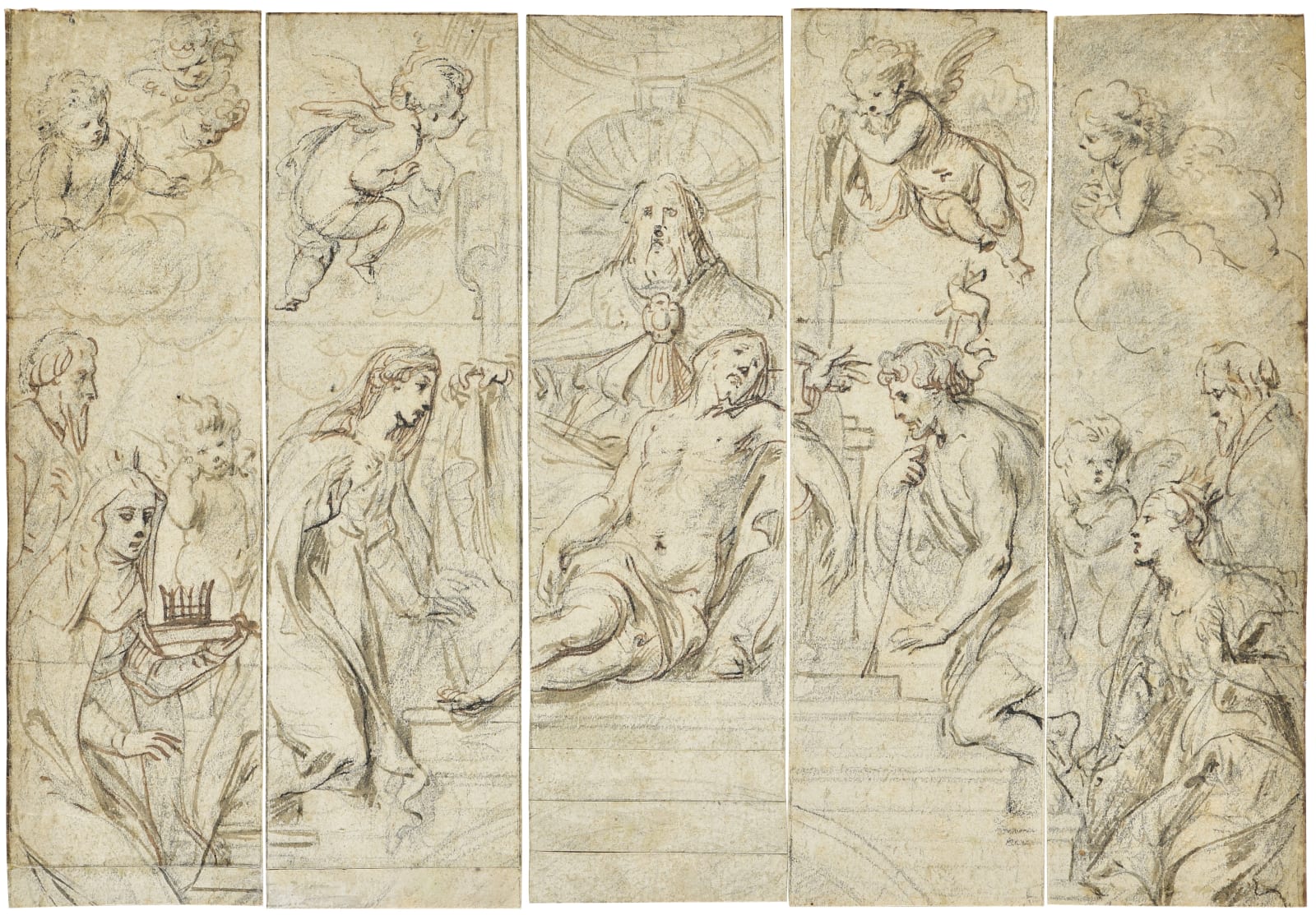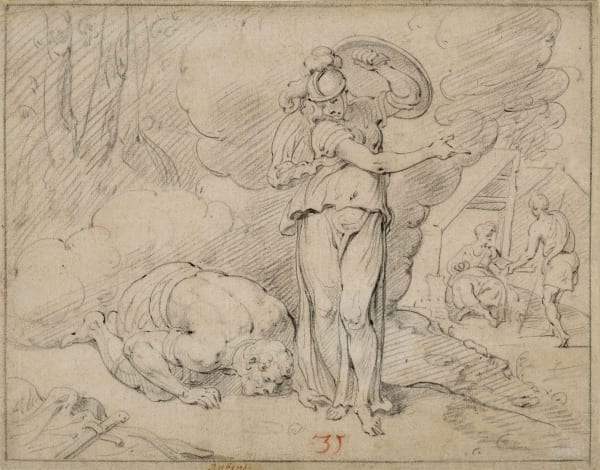Theodoor van Thulden ('s-Hertogenbosch 1606 - 1669)
Theodoor van Thulden was born in 's-Hertogenbosch in 1606, as the eldest of nine children. His father, Jacob van Thulden, was a silversmith by trade, although he earned his keep as a cloth merchant. At the age of fifteen van Thulden moved to Antwerp, where he studied with the little-known portrait painter Abraham Blyenberch. In 1626 he became a member of the Antwerp guild of St Luke; he would be dean of the guild in 1639 and 1640. Although he was never a pupil of Rubens, he was greatly influenced by his work and collaborated with him on several occasions, notably on work for the Torre de la Parada in Spain in the years 1636-38. Between 1631/33 the artist stayed in Paris, where he published a series of prints depicting Odysseus’ adventures after Primaticcio's and dell'Abate's frescoes in the Palace of Fontainebleau.
After his return to Antwerp van Thulden married Maria van Balen, the daughter of the painter Hendrick van Balen, on 24 July 1635. Their daughter, Maria Anna, was born in 1636. In 1635 van Thulden collaborated on the decorations for the Joyous Entry of the Cardinal-Infante Ferdinand, a project coordinated and overseen by Rubens. He was also asked by the Antwerp city council to produce the engravings for a commemorative book, the Pompa Introitus honori serenissimi principis Ferdinandi Austriaci. Much delayed, the book was only published in 1641 and caused him considerable financial losses. Van Thulden bought his citizenship of the city of Antwerp in 1636 and was chapel master of the Venerable Chapel in St. James's Church in 1637–1639. In 1639 he was dean of the chamber of rhetoric Olijftak (‘Olive branch’). Despite the fact that he put down deep roots in Antwerp and was quite successful as a painter there, van Thulden remained attached to his hometown and regularly executed commissions there, such as the political allegories he painted for ’s-Hertogenbosch city hall. Possibly plagued by money worries, our painter left Antwerp for Oirschot, where he was registered as a citizen in 1644. A few years later he moved back to ’s-Hertogenbosch, where he would remain for the rest of his life.
Van Thulden mostly painted history pieces and mythological and allegorical scenes, and was one of the best decorative painters of his time. He was often commissioned to paint altarpieces for Catholic patrons in the Southern Netherlands, even after moving back north. Stylistically, the mannerist influences from his early career were replaced in the 1630’s by Rubens' baroque style idiom. From the 1640's onwards, he developed more of a personal style, characterized by a heightened degree of elegance and a turn towards Classicism. Between 1648/51 he participated in painting the decorations for the Oranjezaal in Huis Ten Bosch (The Hague), alongside other artists such as Gerrit van Honthorst and Jacob Jordaens. Van Thulden was also active as an etcher, producing original works as well as prints after works by other artists.
Although van Thulden is mostly known as a painter and draughtsman, he also occasionally produced designs for stained-glass windows. The best-known example of this is the series of cartoons he made for four monumental stained-glass windows for the Cathedral of St Michael and St Gudula in Brussels, which are kept in the Royal Museums of Art and History (Brussels). Two other drawings - one kept in Bruges, the other in the Royal Library in Brussels - attest to van Thulden’s activities as a designer of stained-glass windows. The present drawing, which compares favorably stylistically and technically to the others, may be added to that small corpus. In this work, the artist has used five separate sheets - one for each section of the projected window. In her recent article on Abraham van Diepenbeeck (2020) Saskia van Altena writes on our drawing: "So far unrelated to a specific commission, it betrays a similar dependency on Mannerist form, reminiscent of the work of influential contemporaries such as Hendrik de Clerck (c. 1560–1630), visible, for example, in the facial features and proportions of the figures of the Virgin and the crowned female saint to the right. At the same time, however, Rubensian elements are introduced, as can be seen in the plump and twisted bodies of the frolicking, airborne putti.” Although she attributed the drawing to van Diepenbeeck at the time, she has since convincingly reattributed the sheet to Theodoor van Thulden, citing many similarities to the other known designs for stained-glass by the artist, and specifically the design kept in the Royal Library.
Provenance
Sotheby's Amsterdam, 11 November 1997, lot 57;
Private collection, The Netherlands.
Literature
- X
- Tumblr
-
 Theodoor van Thulden ('s-Hertogenbosch 1606 - 1669)The Triumph of the Virgin Maryoil on canvas114,5 x 85,5 cmsigned and dated 'T. van Thulden fec AE 1663', lower left
Theodoor van Thulden ('s-Hertogenbosch 1606 - 1669)The Triumph of the Virgin Maryoil on canvas114,5 x 85,5 cmsigned and dated 'T. van Thulden fec AE 1663', lower left -
 Theodoor van Thulden ('s-Hertogenbosch 1606 - 1669)Minerva and Odysseus on Ithacablack chalk on laid paper198 x 250 mminscribed with the number '31'; inscribed 'Rubens'
Theodoor van Thulden ('s-Hertogenbosch 1606 - 1669)Minerva and Odysseus on Ithacablack chalk on laid paper198 x 250 mminscribed with the number '31'; inscribed 'Rubens'


